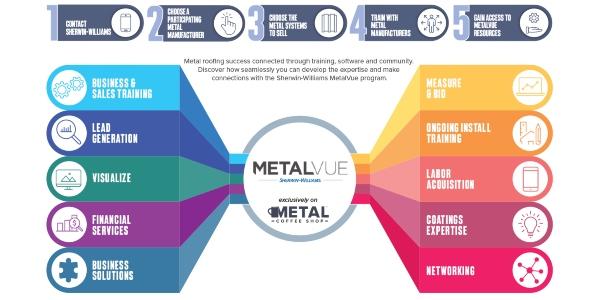UP TO THE MINUTE
Essential Skills for Your Front-line Supervisor - Part Three

By John Kenney, Cotney Consulting Group.
In our final part of this series, you'll learn other valuable skills every front-line supervisor should have, including safety management and conflict resolution.
In parts one and two, we discussed how your front-line supervisors are a vital link between senior management and the workforce and the first thirteen essential skills to empowering your front-line supervisors. In this final part of the series, we will discuss motivation, performance, risk and safety, working effectively with the team, active listening, conflict resolution and time management.
Motivation
Depending on how a person is naturally wired, they tend to be more positive or negative with their emotional outlook. Our motives are the underlying reason for action, giving us the drive to achieve our goals. Positive motivation provides us with satisfaction or feeling good about achieving our objective. When we encounter obstacles or things go wrong positive reasoning keeps us pushing through those difficult situations and staying focused on the goals we strive to achieve.
As a supervisor, you must understand how to motivate your direct reports to do their best and exceed expectations in meeting goals. This requires mastering two kinds of motivation: intrinsic and extrinsic. Extrinsic motivation is what you provide to your employees; inherent inspiration comes from inside your employee with the belief that they have the internal to accomplish the tasks to meet the goals.
Performance
Setting employees' production, quality, or safety goals is a great way to manage performance. If the goals are not achieved, you need to have an action plan to ensure future goals are met. You must always keep in mind that there can be two sources of failure within a company's operations: people and processes. Depending on the infraction, the employee should either be retrained, counseled, warned, penalized or terminated.
Risk and safety
Most roofing companies do not do a comprehensive project risk assessment process to determine the risk, and exposure workers face in the planned operations. The crew leader and superintendent that plan the roofing work should do the safety planning, select the means and methods, and assign the workflow tasks. They are in the best position to assess risk and modify the planned operations to achieve the work at minimal risk. Typically, the safety director inspects ongoing work to identify hazards and unsafe behaviors of workers, which is an ineffective approach to dealing with risk and safety.
Working effectively with the team
To lead a crew successfully, you must be able to persuade them to do something they may not want to do. This is known as the art of influence, which is the ability to move others to achieve project objectives where everyone wins — you, the crew, and the company. To persuade effectively, you must create win-win situations when in challenging situations or when dealing with problematic individuals or groups.
Another aspect of the roofing process is safety which requires cooperation and active participation from everyone involved to achieve an injury-free work environment. This is especially true in roofing, where crews must work cooperatively to complete the project successfully.
Active listening
Three common elements are essential for active listening. The first is paying careful attention and being aware of the nonverbal responses of the listener. The second is the ability to paraphrase the speaker's message back to them in your own words without judgment for clarity. And the most compelling element of active listening involves you asking questions to encourage the speaker to expand upon their intent, which may reveal their understanding, beliefs, or feelings.
Conflict resolution
Managing conflict as it occurs is a critical life skill and one of the most challenging aspects of workplace supervision. Conflict is normal and will happen, so you must expect it and be prepared. The causes of conflict can include poor communication, differing opinions, competitive tensions, power struggles, ego, pride, jealousy, performance discrepancies and many other reasons.
As a strong leader, you must face conflict head-on. You can not ignore workplace conflict because it will derail any well-planned project or objective, including a crew's complete dissolution. Identify its sources, use it to your advantage to create a constructive process, and move the team forward, focusing on the desired outcome.
Influential leaders understand various approaches to conflict management. They learn to utilize the best methods to bring closure to any conflict in their team. Generally, a positive interactive approach is best whenever possible, focusing on the issues rather than on individuals. If you learn to accomplish this, you will effectively resolve any dispute.
Time management
Time management is one of your most valuable resources. If time is not managed effectively, you can end up in a firefighting crisis mode on your projects. This leads to last-minute decisions to meet deadlines and unexpected crises, creating a work environment of excessive stress and diminished performance, which concludes with adverse outcomes for the project and company.
Conclusion
Successful competencies in the supervisory position are critical to the superior performance of the workforce in the field. Managing and leading people is more about effective communication, empowerment and support than command and control. The front-line supervisor that understands and utilizes the skills we have reviewed in this article will encourage and engage the workforce to perform at exceptional levels. Qualified employees empowered with knowledge are the drivers, and front-line supervisors are supporters and coaches.
Learn more about Cotney Consulting Group in their directory or visit www.cotneyconsulting.com.
About John Kenney
John Kenney is the Chief Executive Officer at Cotney Consulting Group. Prior to starting Cotney, John had 45 years of experience in the construction industry. John began his career by working as a roofing apprentice at a family business in the Northeast. Because of his skill and hard work, he progressed from roofing laborer to foreman, estimator, chief estimator, Vice President, and Chief Operating Officer with his various companies. John has worked for multiple Top 100 Roofing Contractors and is intimately familiar with all aspects of roofing production, estimating, and operations. In his last role, John was responsible for the daily operations and performance of a large commercial roofing contractor. During his tenure, John ran business units associated with delivering excellent workmanship and unparalleled customer service while ensuring healthy net profits for his company.



















Comments
Leave a Reply
Have an account? Login to leave a comment!
Sign In